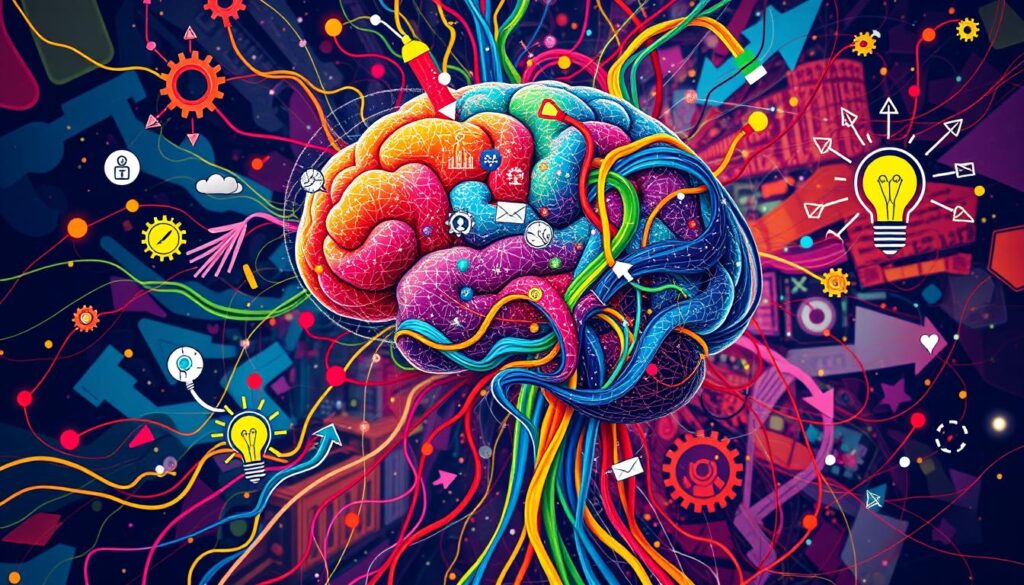Communication is at the heart of every relationship, whether personal or professional. I’ve always been fascinated by how words, tone, and body language shape our interactions. One approach that has dramatically improved my ability to connect with others is Neuro Linguistic Programming (NLP). By understanding how language and the brain interact, I’ve learned how to influence conversations, build rapport, and foster better understanding.
In this article, I’ll explore effective communication through NLP techniques, providing insights into how you, too, can enhance your skills. Whether you’re looking to improve workplace communication, strengthen personal relationships, or boost confidence, NLP has something to offer.
What is Neuro Linguistic Programming (NLP)?
Neuro Linguistic Programming, or NLP, is a psychological approach that connects neurological processes, language, and behavioral patterns learned through experience. Developed in the 1970s by Richard Bandler and John Grinder, NLP offers tools and techniques to reprogram thought patterns and improve communication effectiveness.
The Three Components of NLP
| Component | Description |
|---|---|
| Neuro | The way our brain processes and interprets information. |
| Linguistic | The language we use to communicate with ourselves and others. |
| Programming | The patterns of behavior we develop based on past experiences. |
By understanding these three elements, I’ve been able to reshape my communication style and interact more effectively with people from all walks of life.
Key NLP Techniques for Effective Communication
1. Building Rapport
One of the most powerful NLP techniques is rapport building. When I establish rapport with someone, they feel more comfortable and open to communication.
How to Build Rapport Using NLP:
- Mirroring: Subtly copy the other person’s body language, tone, and speech patterns.
- Pacing and Leading: First, match their energy and style, then gradually shift the conversation to guide them toward your perspective.
- Active Listening: Show genuine interest by nodding, maintaining eye contact, and summarizing their key points.
“People like people who are like themselves.” – NLP Principle
2. Anchoring for Emotional Control
Anchoring is about associating an external stimulus with an emotional response. I use this technique to trigger positive states of mind.
Steps to Create an Anchor:
- Recall a strong positive emotion (e.g., confidence, happiness).
- Perform a unique physical gesture (e.g., tapping your fingers together).
- Repeat until the gesture reliably triggers the desired feeling.
Whenever I feel nervous before a presentation, I use my anchor to regain confidence instantly.
3. Reframing for Positive Perspectives
Reframing is a technique I use to change the way I or others perceive a situation. Instead of seeing challenges as obstacles, I frame them as opportunities.
Examples of Reframing:
| Negative Thought | Reframed Positive Thought |
| “I failed.” | “I learned a valuable lesson.” |
| “I’m terrible at this.” | “I am improving every day.” |
This simple shift in language has helped me and those around me maintain a growth mindset.
4. Using the Milton Model for Persuasion
The Milton Model consists of indirect and persuasive language patterns. I use it to influence conversations without sounding pushy.
Milton Model Techniques:
- Embedded Commands: “You might find yourself feeling more confident as you read this.”
- Presuppositions: “When you start applying these techniques, you’ll notice better communication.”
- Metaphors and Stories: Telling relatable stories to guide thought patterns.
5. The Meta Model for Clarity
The Meta Model is the opposite of the Milton Model. It helps uncover vague or limiting language to get to the root of a conversation.
Key Questions to Gain Clarity:
- “What specifically do you mean?”
- “How do you know that?”
- “Can you give an example?”
By using these questions, I ensure that conversations are clear and misunderstandings are minimized.
Applying NLP in Everyday Communication
In the Workplace
- Improve negotiation skills through mirroring and persuasive language.
- Enhance leadership abilities by using reframing techniques to inspire teams.
- Resolve conflicts effectively with the Meta Model to clarify misunderstandings.
In Personal Relationships
- Build deeper connections by mirroring and actively listening.
- Strengthen emotional bonds using anchoring techniques.
- Reframe disagreements to find mutual solutions.
In Public Speaking
- Use anchoring to boost confidence before stepping on stage.
- Employ persuasive language patterns from the Milton Model.
- Reframe nervousness as excitement to improve delivery.
Key Takeaways
- NLP enhances communication by understanding how language and thought patterns influence behavior.
- Techniques like mirroring, anchoring, reframing, and persuasive language can improve conversations.
- Applying NLP can strengthen workplace interactions, relationships, and public speaking skills.
Frequently Asked Questions (FAQ)
Q1: Is NLP manipulation?
A: NLP is about effective communication, not manipulation. It helps foster better understanding and rapport.
Q2: How long does it take to see results?
A: With consistent practice, improvements can be noticed within weeks or even days.
Q3: Can anyone learn NLP?
A: Absolutely! NLP is for anyone looking to improve communication and personal development.
Q4: Is NLP scientifically proven?
A: While NLP is widely used in psychology and business, scientific backing is mixed. However, many professionals swear by its effectiveness.
Conclusion
Mastering NLP has transformed the way I communicate, helping me build stronger relationships and navigate conversations with confidence. By applying techniques like rapport building, anchoring, reframing, and persuasive language, I’ve seen remarkable improvements in my personal and professional life.
If you’re looking to become a more effective communicator, NLP offers a powerful toolkit. The best part? These skills are easy to learn and can be applied immediately. So why not give them a try today?
By following these NLP principles, you’ll enhance your communication skills, build better relationships, and influence conversations more effectively. Happy communicating!

